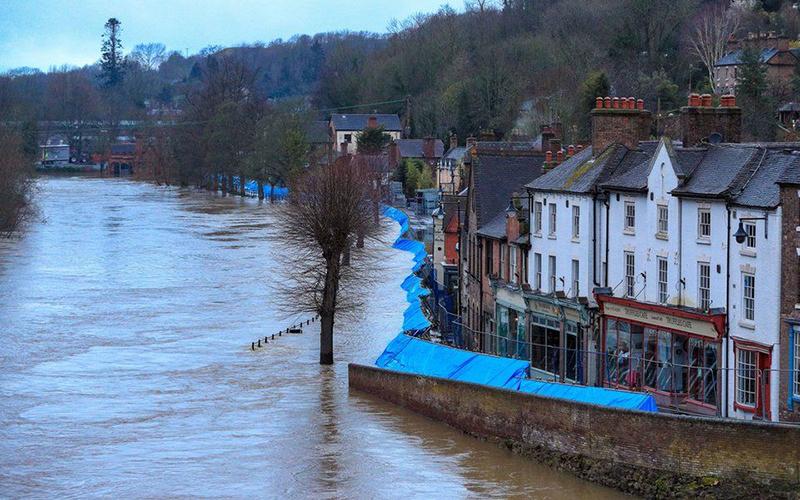
James Scott's 5-point climate change action plan
BALI Registered Contractor member The Garden Company's Managing Director James Scott has written a blog piece about climate change and how designers and landscapers can tackle it together following the torrential rain which caused severe damage to the UK last month.
What more can we do to tackle climate change and improve the sustainability of our industry? It’s a formidable challenge for all garden designers and landscapers and no doubt one that we are already tackling as individuals and businesses in some shape or form. I feel sure that the participants at the last Futurescape Summit headed home with the good intention to do more. Since then, we’ve all experienced the wettest month on record according to the Met Office, as Storm Ciara, Storm Dennis and Storm Jorge have lashed the country within the last few weeks (the image above illustrates recent flooding in the Midlands).
In my view, a long-term, effective solution to the challenge will require more than good intentions and individual effort – I believe we need to work together across our industry to bring about major culture change. We need to significantly shift our culture (‘the way we do things around here’) towards more sustainable practices. This will take effective change management and strong leadership. People will need to commit with their hearts and minds to a different way of working, not just comply with it or pay it lip service.
With this in mind, here’s my action plan for garden designers and landscapers to work together on this challenge, i.e. things that we need to do now and over time (with credit given to change management guru John Kotter for his framework on leading change):
- Create a sense of urgency throughout the garden design and landscaping industry about the need to change to more sustainable ways of working. Find ways to promote honest and objective discussions about our industry’s role regarding the causes and effects of climate change. Explore openly the threats to the environment of ‘continuing as we are’ in garden design and landscaping – not just in our operational roles but also in all of our ‘support’ endeavours (for example, the way we train and educate the designers and landscapers of the future).
- Build positive alliances between garden designers, landscapers, professional associations, suppliers and contractors. Make sure that people from each of these different perspectives are working together on the challenge of climate change and are united for combined action. Create forums where different groups can work together with a shared agenda for change. For example, bring professional societies and associations together to form a unified view of what needs to be done.
- Create an inspiring vision of what we are all working towards. Describe the new, more sustainable ways of working as visually and impactfully as possible. Make sure that everyone understands where we are heading as an industry – and is prepared for difficult questions! E.g. What will be ‘in’ and what will be ‘out’ in future? What will it mean to apply the 3 R’s of sustainability throughout our activities (not to mention a few more R’s)? How will we align our industry’s PR and marketing initiatives – flower shows, conferences, publications – with the new, more sustainable ways of working? What do we need our clients to understand about sustainability?
- Communicate, communicate, communicate. Make sure that climate change and sustainability are always on the agenda. Talk about progress, successes and benefits realised as often as possible. Recognise and reward people for being role models (e.g. reflect this in awards schemes, prizes and medals). Talk about the proposed changes to working policies and practices regularly and listen genuinely to peoples’ concerns.
- Create short-term targets for the garden design and landscaping industry regarding climate change and keep building on these. We will need ‘baby steps’ towards more sustainable ways of working, not just one distant goal. We will also need to avoid declaring victory too soon – it will be essential to keep seeking out further opportunities for improved sustainability.
In summary, as an industry, we are uniquely placed to identify opportunities to protect landscapes from the effects of climate change and mitigate its causes. Addressing this challenge will require skilful change management and leadership. This will be a process, not a ‘one-off’ exercise. If we do it well, we will not only embed the new practices in our own industry, but we will set a great example to other industries too.
Your thoughts on this vitally important topic are very welcome, please use the link at the top of this blog post to comment. If you have enjoyed reading this article, please take the opportunity to browse other blog posts on a range of industry-related topics on The Garden Company website.
This blog post first appeared as an article in Pro Landscaper magazine (online version) in March 2020.

